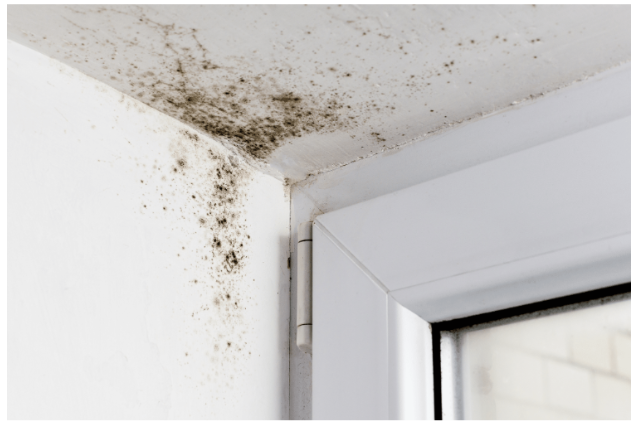
In the quest to understand and manage fibromyalgia, a condition that mystifies many with its widespread pain, fatigue, and cognitive fog, we often overlook environmental factors that could be silently aggravating our symptoms. Among these, mold mycotoxins stand out as a significant yet underrecognized culprit. This blog post aims to shed light on how these invisible invaders can exacerbate autoimmune conditions such as fibromyalgia, offering insights into detection, management, and prevention.
Understanding Fibromyalgia: The Basics
Fibromyalgia is not just about widespread pain; it’s a complex syndrome that weaves a tangled web of symptoms, deeply affecting the lives of those it touches—predominantly women. Imagine waking up every morning, your body echoing with the remnants of pain from a battle fought in your sleep. The fatigue is bone-deep, as if sleep, that elusive restorer of energy, has become a stranger. This is the relentless reality for women battling fibromyalgia.
But the pain is not just physical. It’s the kind of pain that infiltrates every aspect of life, from the personal to the professional. Sarah, for example, is a 38-year-old graphic designer and mother of two, who describes her fibromyalgia pain as “wearing a suit of armor that’s too tight, with spikes on the inside.” Every hug from her children, every step to the office, feels like a marathon effort. The pain is a constant reminder of the things she once took for granted.
The fatigue associated with fibromyalgia is another formidable foe. It’s not just tiredness; it’s a profound exhaustion that no amount of sleep can cure. It’s missing your daughter’s soccer game because you simply don’t have the energy to stand on the sidelines. It’s staring at your computer screen, the words blurring into an indecipherable fog, as you struggle to meet deadlines.
Then there’s the “fibro fog,” a cognitive haze that clouds the mind, making concentration and memory as elusive as a good night’s sleep. Imagine trying to navigate your day through a fog so dense you can’t remember if you’ve taken your medication, let alone manage your daily tasks and responsibilities. This cognitive dysfunction adds another layer of frustration, impacting job performance, personal relationships, and self-esteem.
The emotional toll of fibromyalgia is profound. The constant battle with pain, fatigue, and fog often leads to anxiety and depression, further exacerbating the condition. The isolation can be crippling, as friends and family struggle to understand what you’re going through. It’s the loneliness of feeling misunderstood, of having to cancel plans last minute because you simply don’t have the energy, and the guilt that follows.
Symptoms of Fibromyalgia
- Chronic pain, aching and stiffness, particularly in the muscles, as well as painful tender spots all around the body
- Severe fatigue
- Brain fog, difficulties in concentrating and thinking
- Sleep disturbances, feeling tired on waking
- Depression
- Digestive issues like constipation and diarrhea (think IBS)
- Headaches
- Heightened sensitivity to light, smells, noises and food.
The Invisible Enemy: Mold Mycotoxins

Mold mycotoxins, the unseen hazards lurking in our homes, can be particularly nefarious for individuals with fibromyalgia. These toxic compounds, produced by certain molds in damp environments, are not just a threat to our physical structures but to our health. For someone like Emily, a 42-year-old school teacher living with fibromyalgia, discovering mold in her basement was a turning point. Despite meticulous attention to her health regimen, her unexplained flare-ups led her to uncover the mold infestation. The realization that her living environment could be contributing to her condition was both shocking and enlightening. Mold mycotoxins can exacerbate the already debilitating symptoms of fibromyalgia by promoting inflammation and immune system dysregulation, making it feel like a relentless uphill battle against one’s own body.
How Mold Mycotoxins Exacerbate Fibromyalgia
The relationship between mold mycotoxins and fibromyalgia symptoms is a complex interplay that can turn a person’s home into an adversary. These toxins can intensify the widespread pain, fatigue, and fibro fog that individuals with fibromyalgia endure. For Laura, who had been managing her fibromyalgia symptoms with some success, moving into an older, mold-prone house led to a dramatic worsening of her condition. The constant exposure to mold mycotoxins in her environment acted as a trigger, amplifying her symptoms to the point where even the most basic tasks became insurmountable challenges. This section underscores the critical need for awareness and vigilance in identifying potential environmental triggers that can aggravate fibromyalgia symptoms.
Detecting and Managing Mold Exposure
Detecting mold and managing exposure is crucial for individuals with fibromyalgia, as their symptoms can significantly worsen with mycotoxin exposure. The story of Alex, a freelance writer with fibromyalgia, illustrates the detective work often required. After months of unexplained symptom flare-ups, Alex discovered a hidden mold problem behind the wallpaper in her home office. This discovery led to a comprehensive mold remediation effort, which, although costly and disruptive, was instrumental in improving her fibromyalgia symptoms. This section emphasizes the importance of being proactive in mold detection, such as regular home inspections and addressing dampness promptly, to mitigate its impact on health.
Prevention is Key
Preventing mold growth is essential, especially for those living with fibromyalgia. Simple preventative measures can make a significant difference in managing symptoms and improving quality of life. Consider the case of Ben, who, after learning about the potential impact of mold on his wife’s fibromyalgia symptoms, took proactive steps to improve their home’s ventilation and control humidity levels. These efforts, along with regular checks for leaks and mold growth, helped create a healthier living environment, contributing to a noticeable improvement in his wife’s fibromyalgia symptoms. This section highlights practical steps for mold prevention, underscoring the importance of creating a safe and healthy living environment.
Embracing a Holistic Approach to Fibromyalgia Management

Adopting a holistic approach to managing fibromyalgia means looking beyond medications to address environmental factors like mold exposure. It’s about piecing together a puzzle where each piece—be it diet, exercise, stress management, or environmental health—plays a crucial role in the overall picture of well-being. For individuals like Sophia, integrating mold awareness and prevention into her fibromyalgia management plan was a game-changer. By tackling mold issues in her home, alongside her existing wellness practices, Sophia found a new level of control over her symptoms, illustrating the power of a comprehensive approach to managing this complex condition.


